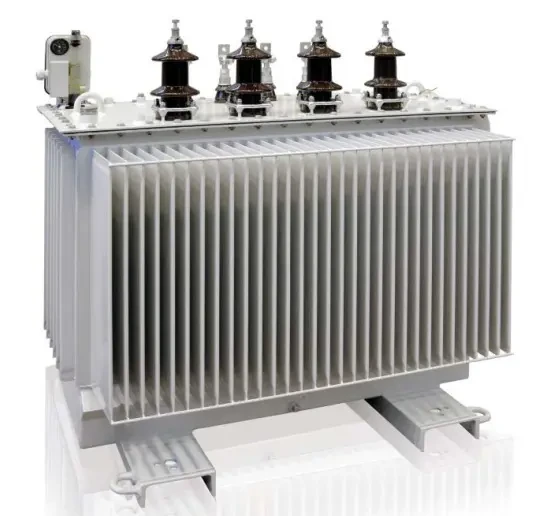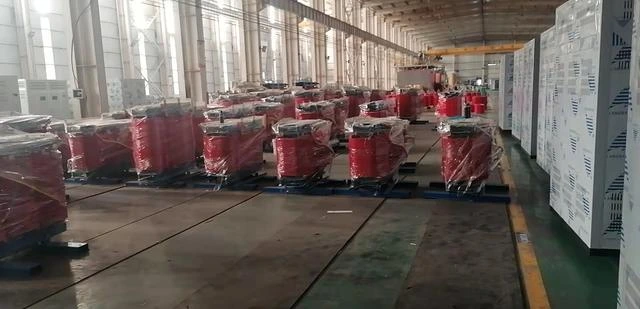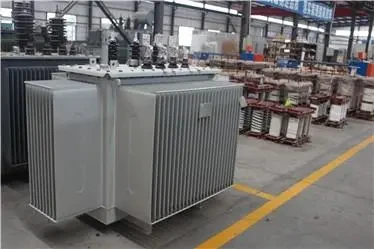
How to Choose Pad Mounted Transformer?
Table of Contents Selecting the right pad-mounted transformer requires careful consideration of several critical
ELECTRIC, WITH AN EDGE

This article gives you detailed information about the comparison of energy efficiency Distribution Transformer Standards in the US, Japan, and China. As a major energy consumer in the power transmission and transformation industry, the energy-saving potential of the transformer industry is huge. Improving the energy efficiency level of transformers is an important element in power energy saving and emission reduction.
In order to reduce the losses of power transformers, many countries have issued transformer energy efficiency Distribution Transformer Standardss and policies, such as GB20052-2006 and GB24790-2009 issued by China, the “Energy Star Transformer Program” launched by the United States in 1998, the European Union in 2005 implemented the The European Union implemented the “Distribution Transformer Promotion Partnership Program” in 2005, and Japan started to implement the “Transformer Energy Efficiency Leader Program” in 2006. The current energy efficiency Distribution Transformer Standardss for transformers in China are GB20052 -2013 and GB24790-2009.

In the energy efficiency Distribution Transformer Standardss of various countries, the energy efficiency indexes of transformers vary.
China’s energy efficiency Distribution Transformer Standards GB20052-2013 adopts no-load loss and load loss as indicators, while Japan’s energy efficiency Distribution Transformer Standards for transformers under the Leaders Program adopts total loss at a certain load rate.
The United States uses the efficiency of transformers at a certain load rate.
Although the energy efficiency indicators are different, the no-load loss and load loss of Chinese transformers can be converted into the total loss of Japanese Distribution Transformer Standards and the efficiency of the United States for comparison. The Chinese transformer energy efficiency testing Distribution Transformer Standardss are GB/T1094.1-2013 and GB/T1094.11-2007.
Japanese transformer energy efficiency testing Distribution Transformer Standardss are JIS C4304-2013 and JIS C4306-2013. American transformer energy efficiency testing Distribution Transformer Standardss are NEMA TP2-2005 developed by the Electrical Manufacturers Association.
GB/T1094.1-2013
GB/T1094.11-2007
Frequency: 50Hz
No-load loss: No temperature calibration.
Load loss: Generally 75°C for oil-immersed transformers, 100°C for dry-type transformers (Class B); 120°C (Class F); 145°C (Class H)
jis c4304-2013
JIS C4306-2013
Frequency: 50/60Hz
Load loss: C4306-2013
Frequency: 50/60Hz
Load loss: Reference temperature – oil-immersed transformers 75°C, dry-type transformers 95°C (Class B); 115°C (Class F); 140°C (Class H).
Load factor: 40% for rated capacity 500kVA and below, 50% for rated capacity 500kVA and above.
Total loss = no-load loss + (m/100)2 × load loss
NEMA TP2-2005
IEEE C57.12.00-2015
IEEE C57.12.01-2015
No-load loss: Reference temperature: 20°C
Load loss: Reference temperature – oil-immersed transformers 55°C; dry-type transformers 75°C
Load factor: 50% for oil-immersed and medium-voltage dry-type distribution transformers; 35% for low-voltage dry-type distribution transformers
Efficiency: no-load and load losses are brought into the formula
E=100×(P×kVA×1 000)/(P×kVA×1 000+NL+LL×P2×T)

JIS C4304-2005 “6k V oil-immersed distribution transformers” and JIS C4306-2005 “6kV sealed winding distribution transformers” are both Japanese energy efficiency Distribution Transformer Standardss for distribution transformers.
The Distribution Transformer Standardss specify the total losses of distribution transformers at a certain load factor (40% or 50%).
In the W formula, m is the Distribution Transformer Standards load factor, 40% for rated capacity 500kVA and below, and 50% for rated capacity 500kVA and above.
Load loss is the load loss (W) at rated capacity under the reference temperature.
Oil-immersed transformer reference temperature 75 ℃; sealed winding type (dry type) transformer reference temperature of 95 ℃ (B class); 115 ℃ (F class); 140 ℃ (H class). Temperature coefficient is 235 for copper; 225 for aluminum.
Capacity / KVA | Total consumption of oil-immersed transformers / W | Total consumption of dry-type transformers / W
|
50 | 306 | 388 |
100 | 481 | 600 |
300 | 986 | 1190 |
500 | 1370 | 1640 |
1000 | 3300 | 3640 |
1500 | 4640 | 4880 |
In 2011, Japan issued the second version of the transformer runner target values with a target year of 2014. The target value of total losses in distribution transformers shall be in accordance with the following calculated values.
Capacity / KVA | Total consumption of oil-immersed transformers / W | Total consumption of dry-type transformers / W
|
50 | 252.7 | 314.8 |
100 | 409.4 | 497 |
300 | 879.4 | 1025.2 |
500 | 1254.8 | 1435.6 |
1000 | 2967 | 3236.7 |
1500 | 4118.9 | 4329.7 |
In 2013 , Japan issued industrial Distribution Transformer Standardss JIS C4304-2013 and JIS C4306-2013, replacing the target values of the lead Distribution Transformer Standards in JIS C4304-2005 and JIS C4306-2005.
The new Distribution Transformer Standards specifies the total loss limits for single-phase 50Hz and 60Hz, 10kVA~500kVA distribution transformers of 6kV class and three-phase 50Hz and 60Hz, 20kVA~2000kVA distribution transformers of 6kV class.
The total loss of oil-immersed distribution transformers shall not exceed the limit value of JIS C4304-2013, and the total loss of sealed winding (dry type) distribution transformers shall not exceed the limit value of JISC4306-2013, with a permitted deviation of +10%.
The total loss limit value of the new Distribution Transformer Standards is basically the same as the target value calculated by the formula of the second edition of the leader Distribution Transformer Standards.
The total loss limits of some three-phase distribution transformers are shown in Table 5.
Capacity / KVA | Total consumption of oil-immersed transformers / W | Total consumption of dry-type transformers / W
|
50 | 252 | 314 |
100 | 409 | 497 |
300 | 879 | 1020 |
500 | 1250 | 1430 |
1000 | 2960 | 3230 |
1500 | 4110 | 4320 |

The United States started early in developing energy efficiency Distribution Transformer Standardss for energy-consuming products. In 1996, the National Electrical Manufacturers Association (NEMA) issued NEMA TP1-1996 “Guidelines for Determining the Energy Efficiency of Distribution Transformers”, a Distribution Transformer Standards for energy efficiency of distribution transformers.
In 1998, NEMA issued a Distribution Transformer Standards test method for transformer energy consumption, NEMA TP2-1998, Distribution Transformer Standards Test Method for Measuring Energy Consumption of Distribution Transformers. In 1998, the U.S. Department of Energy and the Environmental Protection Agency launched the Energy Star Transformer Program to promote high-efficiency, low-loss distribution transformers.
In 2002, the National Electrical Manufacturers Association issued NE-MA TP1-2002. This was followed by NEMA TP1-2005.
It applies to oil-immersed, dry-type, single-phase and three-phase distribution transformers with primary side voltage of 34.5 kV and below.
NEMA TP1-2002 expresses the energy efficiency level of transformers in terms of their efficiency at a certain temperature and at a certain load factor. The formula for calculating transformer efficiency in the Distribution Transformer Standards is:
E = (100 × (P × kVA × 1 000))/(P × kVA × 1 000 + NL + LL × P2 × T)
where P is the load factor, 0.5 for oil-immersed and medium-voltage dry-type distribution transformers, 0.35 for low-voltage dry-type distribution transformers; kVA is the rated capacity (kVA); NL is the no-load loss (W); LL is the load loss at rated load (W).
T is the load loss temperature calibration factor, specifying the reference temperature (55°C for oil-immersed transformers and 75°C for dry-type transformers). Temperature coefficient: 234.5 for copper and 224.5 for aluminum.
The Distribution Transformer Standards specifies the efficiency values of single-phase oil-immersed 10kVA ~ 833kVA distribution transformers and three-phase oil-immersed 15kVA ~ 2 500kVA distribution transformers; specifies the efficiency values of single-phase dry-type 15kVA ~ 333kVA low-voltage (600V) distribution transformers and three-phase dry-type 15kVA ~ 1 000kVA low-voltage (600V) distribution transformers; single-phase dry-type 15kVA ~ 833kVA medium-voltage distribution transformer and three-phase dry type 15kVA ~ 2500kVA medium-voltage distribution transformer efficiency values.
In 2007, the U.S. Department of Energy issued document number EERE-2010-BT-STD-0048 for distribution transformer energy efficiency.
The Distribution Transformer Standards was implemented on January 1, 2010 and applies to oil-immersed and dry-type, single-phase and three-phase distribution transformers.
The Distribution Transformer Standards specifies efficiency values for three-phase oil-immersed distribution transformers from 15kVA to 2,500kVA, and is the federal energy efficiency Distribution Transformer Standards for oil-immersed distribution transformers implemented from January 2010 to January 2016.
The Distribution Transformer Standards also specifies higher required efficiency values for three-phase oil-immersed distribution transformers, which will be implemented from January 2016.
On April 18, 2013, the U.S. Department of Energy released DOE 201610 CFR Part 431 part ii, a distribution transformer energy efficiency Distribution Transformer Standards (DOE Distribution Transformer Standards) to be implemented in January 2016, which adopts a minimum efficiency for a certain load factor to indicate transformer energy efficiency and is mandatory.
The oil-immersed distribution transformers are basically consistent with the efficiency values implemented in January 2016 in EERE-2010-BT-STD-0048. Some of the efficiency values are shown in Tables 6 and 7.
Capacity / KVA | NEMA TP1-2002 | EERE-2010-BT-STD-0048 | DOE 2016 10 CFR Part 431 part ii |
45 | 98.6 | 98.76 | 98.92 |
75 | 98.7 | 98.91 | 98.03 |
112.5 | 98.8 | 99.01 | 99.11 |
300 | 99 | 99.23 | 99.27 |
500 | 99.1 | 99.25 | 99.35 |
1000 | 99.2 | 99.36 | 99.43 |
1500 | 99.3 | 99.42 | 99.48 |
2000 | 99.4 | 99.46 | 99.52 |
Capacity / KVA | NEMA TP1-2002 | DOE 2016 10 CFR Part 431 part ii |
45 | 97.7 | 98.4 |
75 | 98 | 98.6 |
112.5 | 98.2 | 98.74 |
300 | 98.6 | 99.02 |
500 | 98.7 | 99.14 |
1000 | 98.9 | 99.28 |

In addition to the different energy efficiency indicators adopted by each country, there are also the following differences.
China’s energy efficiency Distribution Transformer Standards for transformers GB20052-2013 applies to three-phase 10k V oil-immersed distribution transformers with a capacity of 30kVA to 1 600kVA and dry-type distribution transformers with a capacity of 30kVA to 2 500kVA without excitation and voltage regulation.
Japanese energy efficiency Distribution Transformer Standardss apply to 6kV single-phase 50Hz and 60Hz, 10k VA ~ 500kVA, oil-immersed and dry-type distribution transformers, 6kV three-phase 50Hz and 60Hz, 20kVA ~ 2,000kVA, oil-immersed and dry-type distribution transformers.
U.S. energy efficiency Distribution Transformer Standardss apply to voltage 34.5kV and below, single-phase oil-immersed 10kVA ~ 833kVA distribution transformers, three-phase oil-immersed 15kVA ~ 2 500kVA distribution transformers, single-phase dry-type 15kVA ~ 833kVA distribution transformers, three-phase dry-type 15kVA ~ 2 500kVA distribution transformers.
China load loss reference temperature and insulation class. Oil-immersed transformers are generally 75 ℃; dry-type transformers for 100 ℃ (B class), 120 ℃ (F class), 145 ℃ (H class).
Japanese Distribution Transformer Standards load loss reference temperature: oil-immersed transformers 75 ℃; sealed winding type (dry type) transformers 95 ℃ (B class), 115 ℃ (F class), 140 ℃ (H class).
American Distribution Transformer Standards no-load loss reference temperature of 20 ℃, load loss reference temperature: oil-immersed transformers for 55 ℃; dry-type transformers for 75 ℃.
China transformer load rate is rated load. Japan’s Distribution Transformer Standards load rate: rated capacity of 500kVA and below 40%, rated capacity of 500kVA or more for 50%. U.S. Distribution Transformer Standards load factor: oil-immersed and medium-voltage dry-type distribution transformers for 50%, low-voltage dry-type distribution transformers for 35%.
GB20052-2013 no-load loss and load loss into the Japanese Distribution Transformer Standards in the total loss formula, converted into the Japanese Distribution Transformer Standards in the total loss for comparison.
The reference temperature of load loss of Chinese oil-immersed transformers and the reference temperature of Japanese load loss are both 75℃, so there is no need for temperature conversion. The no-load loss value and the load loss value in the Chinese energy efficiency Distribution Transformer Standards are brought into the formula to get the total loss. The comparison results of oil-immersed transformers are shown in Table 8.
The no-load and load losses of Chinese oil-immersed transformers at all levels of energy efficiency are converted into Japanese total losses, and the total losses corresponding to energy efficiency level 3 are 9.37%~25.84% higher than Japanese total losses.
The total losses corresponding to the energy efficiency of some capacity transformers in level 2 are lower than the total losses in Japan, and the total losses corresponding to the energy efficiency of some capacity transformers in level 2 are 2.08%~15.03% higher than the total losses in Japan.
The total loss corresponding to energy efficiency level 1 is lower than the total loss in Japan. There is no deviation in China’s energy efficiency Distribution Transformer Standards, and the deviation in Japan’s energy efficiency is allowed +10%.
After considering the deviation, the energy efficiency of Chinese oil-immersed transformers in Class 2 can basically meet the total loss requirements of Japanese energy efficiency Distribution Transformer Standardss.
The load loss of Chinese dry-type transformers of class F (reference temperature 120℃) is converted to the load loss of Japanese class F (reference temperature 115℃). The no-load and load losses are brought into the formula to get the total losses. The comparison of dry-type transformer class F is shown in Table 9.
The no-load and load losses of Chinese dry-type transformers at all levels of energy efficiency are converted to Japanese total losses, and the total losses corresponding to level 3 energy efficiency are 16.84%~36.21% higher than Japanese total losses. The total loss corresponding to energy efficiency level 2 is 5.85%~18.87% higher than the total loss in Japan. The total loss corresponding to energy efficiency level 1 of some capacity transformers is 2.54% ~7.32% higher than the total loss in Japan.
No deviation is set for China’s energy efficiency Distribution Transformer Standards, while deviation of +10% is allowed for Japan’s energy efficiency Distribution Transformer Standards. After considering the deviation, Chinese dry-type transformer energy efficiency level 1 can basically meet the total loss requirements of Japanese energy efficiency Distribution Transformer Standardss. Chinese transformer energy efficiency level 3 is the basic level, which differs greatly from the Japanese energy efficiency Distribution Transformer Standards.
The no-load loss and load loss values in GB20052-2013 are converted to the efficiency in the U.S. Distribution Transformer Standards.
The Distribution Transformer Standards transformer capacity in the United States is: 15kVA, 30kVA, 45kVA, 75kVA, 112.5kVA, 150kVA, 225kVA, 300kVA, 500kVA, 750kVA, 1,000kVA, 1,500kVA, 2,000kVA, 2,500kVA.
China transformer capacity: 30kVA, 50kVA, 63kVA, 80kVA, 100kVA, 125kVA, 160kVA, 200kVA, 250kVA, 315kVA, 400kVA, 500kVA, 630kVA, 800kVA, 1,000kVA, 1,250kVA, 1,600kVA.
Therefore, in this paper, the efficiency values for the U.S. portion of the capacity (50kVA, 100kVA, 315kVA, 1,600kVA) are calculated by interpolation.
After conversion and comparison, the converted efficiency values of oil-immersed transformers in GB20052-2013 are lower than the efficiency values of the U.S. Distribution Transformer Standards. The converted efficiency values of some Chinese capacity energy efficiency level 1 loss values are higher than the U.S. efficiency values, and some are lower than the U.S. efficiency values.
China’s energy efficiency level 3 is the minimum required value for the mandatory implementation of transformers in China, and there is a certain gap between it and the current efficiency value of the United States.
After conversion and comparison, the converted efficiency values of dry-type transformers in China’s current energy efficiency Distribution Transformer Standards GB20052-2013 are all lower than the efficiency values of the U.S. Distribution Transformer Standards. Some of the converted capacity efficiency values of Chinese energy efficiency level 1 and level 2 loss values are higher than the U.S. efficiency values, and some are lower than the U.S. efficiency values. China’s energy efficiency level 3 is the mandatory minimum requirement for transformers in China, and there is a certain gap between it and the current efficiency value of the United States, and there is room for improvement.
After conversion and comparison, the total loss after conversion of no-load loss and load loss limits of Chinese oil-immersed transformers with Grade 3 energy efficiency is higher than the total loss limits of Japanese Distribution Transformer Standardss by 9.37%~25.84%.
The total loss of Chinese dry-type transformers after converting the no-load loss and load loss limits of energy efficiency class 3 is higher than the total loss limit of Japanese Distribution Transformer Standards by 16.84%~36.21%, and the total loss of dry-type transformers after converting the no-load loss and load loss limits of energy efficiency class 2 is higher than the total loss limit of Japanese Distribution Transformer Standards by 5.85%~18.87%.
The no-load loss and load loss of transformers are proportional to the total loss, and the total loss can be reduced by reducing the no-load loss or load loss. In the future revision of China’s transformer energy efficiency Distribution Transformer Standardss, it is recommended to consider reducing no-load loss and load loss.
After conversion and comparison, the converted efficiency values of Chinese oil-immersed transformers of Grade 2 and Grade 3 are lower than the efficiency values of the U.S. Distribution Transformer Standards, up to 0.29%.
The converted efficiency values for dry-type transformers of Class 3 are lower than the U.S. Distribution Transformer Standards efficiency values, up to 0.54%.
Download Resource

Table of Contents Selecting the right pad-mounted transformer requires careful consideration of several critical

The primary function of the pad mounted transformer is to serve as a critical distribution

A pad mounted transformer operates through electromagnetic induction, serving as a crucial distribution component that
After filling in the contact information, you can download the PDF.